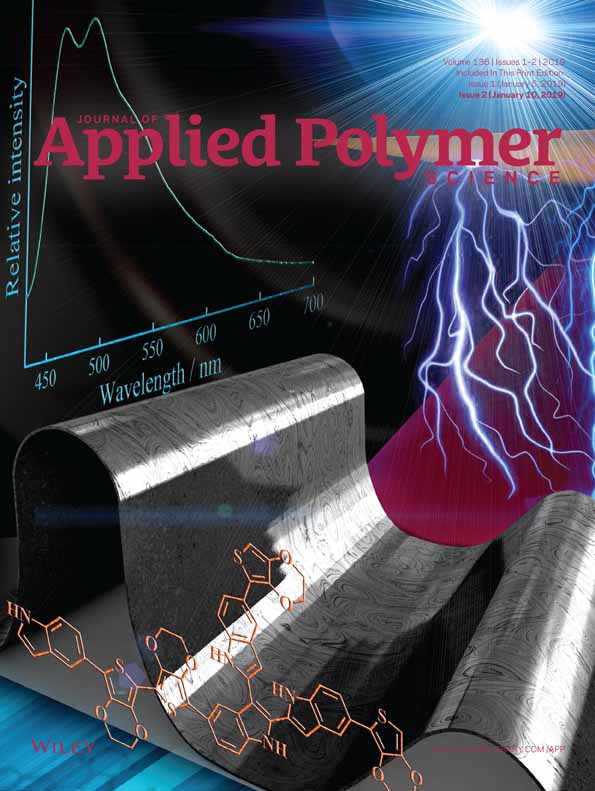Hydrolytic and thermal degradation of polyethylene glycol compatibilized poly(lactic acid)-nanocrystalline cellulose bionanocomposites
ABSTRACT
This study investigates the effect of nanocrystalline cellulose (NCC) and polyethylene glycol (PEG) on the hydrolytic degradation behavior of poly(lactic acid) (PLA) bio-nanocomposites compared with that of neat PLA, under specific environmental condition, namely at 37°C in a pH 7.4 phosphate buffer medium for a time period up to 60 days. The water absorption, mass loss, molecular weight, and the morphologies of nanocomposites before and after degradation were explored. Thermogravimetric analysis (TGA) was used to study the thermal decomposition of the PLA/NCC/PEG nanocomposites before and after degradation. The results showed that the presence of hydrophilic NCC and PEG significantly accelerated the hydrolytic degradation of PLA, which was related to the rapid dissolution of PEG causing easy access of water molecules to the composites and initiating fast hydrolytic chain scission of PLA. The thermal degradation temperatures of the nanocomposites slightly decreased due to the poor thermal stability of NCC in comparison with that of the neat PLA. After degradation, the thermal stability of the separated PLA from nanocomposites significantly decreased because the molecular decreased during the hydrolytic process. © 2018 Wiley Periodicals, Inc. J. Appl. Polym. Sci. 2019, 136, 46933.




